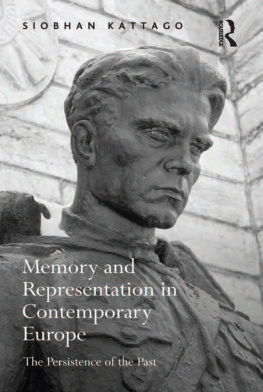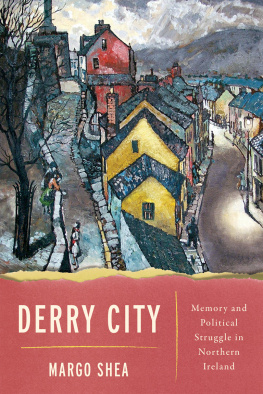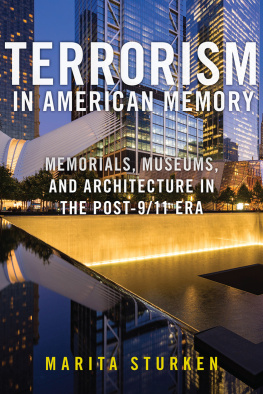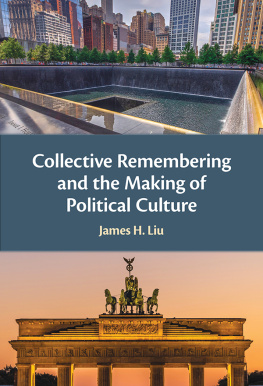Published in 2014 by
Berghahn Books
www.berghahnbooks.com
2014, 2016 Elisabetta Viggiani
First paperback edition published in 2016
All rights reserved. Except for the quotation of short passages for the purposes of criticism and review, no part of this book may be reproduced in any form or by any means, electronic or mechanical, including photocopying, recording, or any information storage and retrieval system now known or to be invented, without written permission of the publisher.
Library of Congress Cataloging-in-Publication Data
Viggiani, Elisabetta.
Talking stones: the politics of memorialization in post-conflict Northern Ireland / Elisabetta Viggiani.
pages cm
Includes bibliographical references and index.
ISBN 978-1-78238-407-6 (hardback) -- ISBN 978-1-78533-341-5 (paperback) -- ISBN 978-1-78238-408-3 (ebook)
1. Memorialization--Political aspects--Northern Ireland. 2. Collective memory--Northern Ireland. 3. Political violence--Northern Ireland--History--20th century. 4. Northern Ireland--Politics and government--1994- I. Title.
DA990.U46V45 2014
941.60824--dc23
2014014153
British Library Cataloguing in Publication Data
A catalogue record for this book is available from the British Library
ISBN 978-1-78238-407-6 (hardback)
ISBN 978-1-78533-341-5 (paperback)
ISBN 978-1-78238-408-3 (ebook)
To Professor A. Musacchio, Alvaro and my beloved grandparents,
Elvia and Nino
Men make their own history, but they do not make it as they please; they do not make it under self-selected circumstances, but under circumstances existing already, given and transmitted from the past. The tradition of all dead generations weighs like a nightmare on the brains of the living. And just as they seem to be occupied with revolutionizing themselves and things, creating something that did not exist before, precisely in such epochs of revolutionary crisis they anxiously conjure up the spirits of the past to their service, borrowing from them names, battle slogans, and costumes in order to present this new scene in world history in time-honored disguise and borrowed language.
Karl Marx, 1852
FOREWORD
Commemoration City:
Shared Futures through Contested Pasts
Belfast 2013. The city has changed. It is almost twenty years since the ceasefires and fifteen since the signing of the political settlement that brought widespread and violent hostilities to an end. The city streets that rioters had so often dug up to hurl at the police and military as well as at one another have once again been paved, if not with gold, then at least with expensive pavoirs. Long gone are the hollowed shells of burnt-out buildings and the toothless gape of empty bomb sites. The skyline is punctuated now by concert halls, shopping malls and iconic, landmark new builds, one of which commemorates Belfasts historic contribution to shipbuilding, a reminder that, even as it regenerates, the city has never been short of things to remember. Yet at the same time, other rents remain in the city fabric, if not of bomb site then in an explosion of debate and sometimes anger at what could or should be remembered and recalled. Belfast is now the undisputed boomtown of disputed anniversaries, a Commemoration City where the site of memory is more hotly contested than any piece of commercial real estate.
Cities transitioning from conflict like Belfast provide productive contexts for the exploration of how violent events of the past are understood and represented. Yet transitional societies often struggle with how and whether to remember the events of their recent past and with what to include, omit or forget. This richly textured book engages with these issues of memory and the past, and moves them on through a compelling analysis of the Irish case. It argues that the void created by the absence of an official state policy on memorialization in Northern Ireland has been occupied by a broad range of groups and organizations, each with its own manner of, and reasons for, remembering: victims and survivor groups, churches, theatrical companies, ex-prisoner organizations and residents groups. Some of the media of remembering deployed by these groups is more visible and durable than others and includes vigils, storytelling, stained-glass windows, pop-up theatre and the construction of physical monuments. The principal focus here is on physical sites of remembrance, such as memorial gardens, plaques and murals, sites that are routinely visible to passers-by and of which the author mapped no fewer than 157 in the Belfast urban area, 79 per cent of which were built since the agreement was signed in 1998. Ironically, it is perhaps these most visible forms of recalling the recent past in Northern Ireland gardens of remembrance and memorial plaques that have been the least well documented, and we are indebted to the author for her comprehensive account.
This efflorescence of public and lay monumentalizing has coincided with a massive upsurge of interest in memory in the social sciences, much of it stimulated by Maurice Halbwachs, whose writings in the first half of the last century introduced the concept of collective memory, which stresses that individual memories are shared memories, framed by group membership, and dependent on social relations. Halbwachss work generated widespread interest in previously disenfranchized and subordinated groups, whose memories had often been dominated, hidden or actively suppressed by the official memories of the state and by other powerful institutions and elites. Memories hitherto marginalized became increasingly recognized as legitimate windows on the past which could complement, balance or challenge dominant historical accounts in a development that democratized memory and encouraged diverse voices to speak. These interpretative strands underpin the analysis in this book, which focuses on the particularly striking and singular case of what unfolds when there is no agreed, official, state-sanctioned approach to memorializing the past, despite long-standing recommendations that consideration should be given to such an approach.
Using extended case studies, the book documents how memory making and nation building so often the jealous monopoly of the state have flourished in Belfast in the hands of a range of non-state organizations, some of which, though bordering on legality, have the moral endorsement of sections of the population. It shows how, through memorials and murals, each of the groups (two Republican and two Loyalist) considered here imprint upon the cityscape their distinctive memories and readings of the past that contain their own exclusions, inclusions, silencings and celebrations. The outcome is a scattering of the past and a fragmentation across space and memory of the contested elements of which that past is retrospectively composed. More than just an architectural backdrop to urban life that determines the territorial boundaries to partisan and moral readings of a violent history, these permanent monuments and competing testaments to the past themselves substantiate and shape memories through their symbolic, spatial and linguistic codes.
Belfasts memorials to the conflict often have a superficial similarity irrespective of origin, and they draw in some measure on shared cultural forms of garden remembrance that include engraved stone slabs of marble or granite, lists of names and dates, floral tributes, landscaped paving, shrubs and gravel, and outdoor seating. But these superficial similarities of appearance belie starkly different political and moral readings of the past and the legitimacy or illegitimacy of the violence that took place then which are evident from a memorials location and expressed through symbol and text. National and other flags as well as symbols associated with republicanism or loyalism such as harp or crown, lily or poppy as well as content of the text and contrasting use of language distinguish each side in addition to the style of the commemorative displays performed there.






